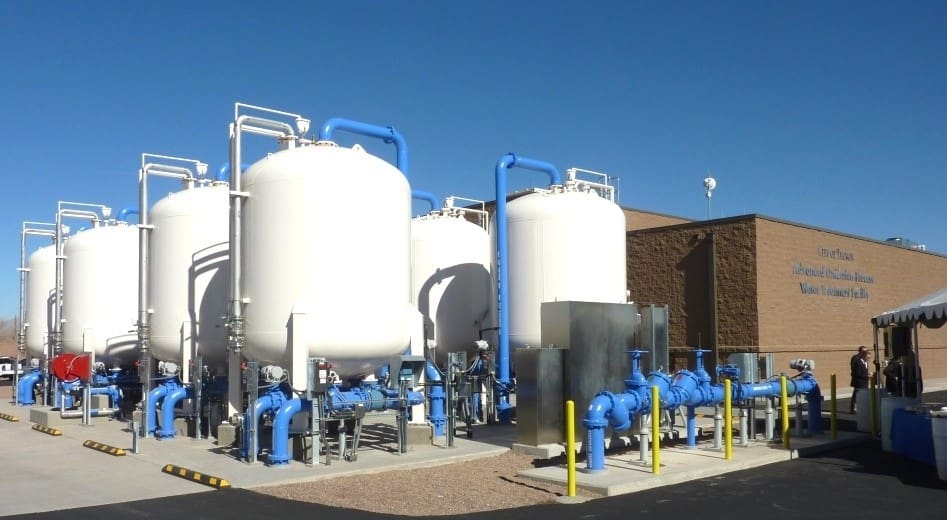Ingenious PFAS Therapy Solutions for Safer Water
The boosting prevalence of PFAS contamination in water products requires a critical assessment of innovative therapy solutions. Advanced purification technologies and unique chemical treatments present encouraging opportunities for lowering these consistent pollutants. Furthermore, arising bioremediation techniques use a more sustainable strategy to taking on PFAS obstacles. As regulative structures remain to adapt, recognizing the effectiveness and scalability of these services comes to be critical. What implications do these improvements hold for public health and wellness and ecological repair, and how can stakeholders efficiently apply them in diverse contexts?
Introduction of PFAS Contamination
PFAS contamination has actually arised as a significant environmental and public health and wellness problem. Per- and polyfluoroalkyl substances (PFAS) are a group of synthetic chemicals known for their determination in the atmosphere and human body, leading them to be frequently described as "permanently chemicals." These compounds have actually been extensively made use of in numerous sectors, consisting of firefighting foams, water-repellent textiles, and food product packaging, largely as a result of their water- and grease-resistant buildings.
The widespread use PFAS has actually led to their discovery in soil, water supplies, and even in the blood of humans and pets. Researches have actually connected PFAS exposure to various health issues, consisting of developing results in babies, immune system dysfunction, and various types of cancer cells. In addition, the environmental persistence of these substances complicates their deterioration and elimination, elevating issues concerning lasting eco-friendly effects.
Regulatory bodies are significantly applying rigid guidelines to monitor and lower PFAS levels in drinking water and other ecological mediums. As recognition of PFAS contamination expands, it has come to be vital for communities and sectors to seek efficient treatment solutions to alleviate exposure and guard public health and wellness.
Advanced Filtration Technologies
As the necessity to deal with PFAS contamination heightens, progressed filtration modern technologies have become an essential component in the remediation initiatives aimed at getting rid of these consistent chemicals from water resources. These modern technologies leverage advanced devices to properly target and catch PFAS substances, which are notoriously immune to standard treatment techniques.
Among the most appealing approaches is making use of granular turned on carbon (GAC), which adsorbs PFAS molecules because of its high area and permeable structure. This technique has actually been widely carried out in both municipal and industrial settings, showing significant reductions in PFAS concentrations. Furthermore, ion exchange materials have gotten grip, specifically developed to precisely bind PFAS ions from water, therefore promoting their elimination.
Membrane layer filtration innovations, such as reverse osmosis and nanofiltration, likewise show effectiveness in PFAS elimination by literally dividing contaminants from water - pfas management. These systems can accomplish high degrees of pureness, making them suitable for drinking water applications
Chemical Treatment Advancements
Countless chemical therapy developments are being checked out to properly address PFAS contamination in water materials. One appealing technique entails the use of innovative oxidation processes (AOPs), this post which utilize powerful oxidants such as ozone, hydrogen peroxide, or chlorine dioxide incorporated with UV light to damage down PFAS substances right into much less dangerous materials. This approach has demonstrated efficacy in laboratory settings, revealing possible for scalability in real-world applications.
One more ingenious technique is the development of ion-exchange materials particularly created to target PFAS. These resins can selectively adsorb PFAS substances from water, permitting their elimination throughout treatment processes. Current improvements have boosted the effectiveness and capability of these resins, making them a favorable alternative for water therapy facilities.
Additionally, scientists are exploring the usage of chemical agents like persulfate and ferrous ions to enhance the destruction of PFAS in polluted water. These agents can generate chain reaction that help with the breakdown of consistent PFAS compounds.
Emerging Bioremediation Techniques
Current developments in chemical treatment advancements have led the method for exploring bioremediation strategies as a viable choice for attending to PFAS contamination. Bioremediation utilizes the all-natural metabolic processes of microbes to deteriorate or change contaminants, making it an appealing approach for dealing with relentless contaminants like PFAS.
Emerging methods in bioremediation include using genetically crafted microbes that can specifically target and break down PFAS compounds. These microbial stress are being created for their enhanced degradation capacities, enhancing the effectiveness of the removal process. Additionally, researchers are exploring the potential of plant-assisted bioremediation, where specific plant varieties may uptake and sequester PFAS from polluted dirt and water.
An additional promising method is the application of bioaugmentation, which includes presenting helpful microorganisms into polluted settings to boost the degradation of PFAS. This technique can promote much faster remediation timelines and enhance total performance.

Regulative Structures and Requirements
A comprehensive regulatory framework is necessary for properly managing PFAS contamination and ensuring public health security. The boosting acknowledgment of per- and polyfluoroalkyl materials (PFAS) as ecological toxins has actually triggered different federal and state firms to go right here create criteria that regulate their existence in water materials. The U.S. Epa (EPA) has developed health and wellness advisories and is pursuing setting enforceable limits for PFAS in drinking water.
State-level regulations differ dramatically, with some states taking on more stringent guidelines than those suggested by the EPA. These policies typically include maximum impurity degrees (MCLs) for particular PFAS compounds, surveillance needs, and reporting commitments for water utilities. Additionally, emerging frameworks concentrate on the removal of polluted sites, stressing the requirement for efficient therapy modern technologies.

Final Thought
Finally, the development and execution of ingenious PFAS treatment solutions are vital for resolving the prevalent issue of water contamination. Advanced filtration modern technologies, chemical therapies, and arising bioremediation techniques jointly provide a multifaceted method to properly decrease and degrade PFAS degrees. As regulatory frameworks remain to progress, integrating these modern technologies will be vital to protect public health and bring back the integrity of infected water sources, inevitably contributing to a cleaner and more secure atmosphere.